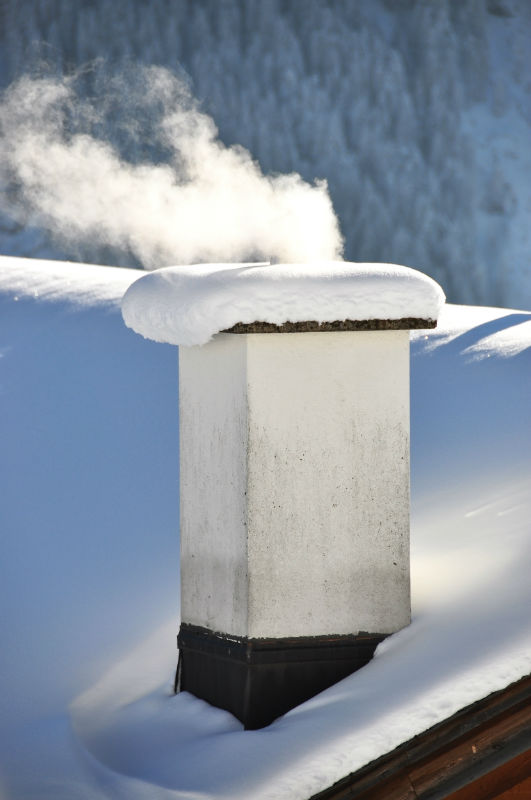Recently, we saw quite a bit of snow here in the Shenandoah Valley area, with an average snowfall amount of about 18 inches. When that much snow accumulates on your roof and your chimney, you could end up with water leak problems. Since the snow has melted, Blue Ridge Chimney Services recommends that you take a look at the exterior of your chimney to check for any missing bricks or mortar joints. You should also be on the lookout for water dripping inside your fireplace. Even if you do not see these signs of water penetration of your chimney, it is always a good idea to call us and schedule a post-winter storm inspection from our Chimney Safety Institute of America (CSIA)-certified chimney sweeps. We have years of experience in finding and repairing chimney leaks. We also heed the warning of the CSIA concerning the dangers of water to a masonry chimney, so we have learned the best ways to prevent chimney water leaks. We would like to tell you a bit more about the most common areas where chimney leaks occur, what causes them, and how we can repair and prevent these leaks.
Watch out for the icicles hanging from your roof!
Heavy snowfall creates the perfect atmosphere for ice dams, which can cause water to leak into your chimney and your home. As the snow melts, the water gets trapped by icicle formations on the edges of your roof and can freeze into an ice dam. Water can get forced back up to where your chimney meets the roof, which is one of the most vulnerable spots for chimney leaks. If this area is not properly protected, water will end up leaking into your chimney. To protect this area, you need a customized flashing system, which consists of sheets of metal that are wrapped around your chimney and layered to form a tight seal. If you do not have a flashing system, or if your existing flashing is damaged, Blue Ridge Chimney Services can help you by constructing a flashing system to fit exactly around your chimney at the roof. We know to allow space for the chimney and roof to expand and contract so that the flashing will not warp or bend to break the seal.
Missing bricks are a sure sign of water penetration damage.
Because masonry materials are so porous, the bricks and mortar of your chimney naturally absorb water. When a snow storm hits, the absorbed water freezes and expands inside the masonry materials. As the temperature rises, this water thaws and the empty space can then force the bricks and mortar to crack, break apart, and eventually fall from the chimney structure. Repeated freezing and thawing cycles can lead to significant damage, if left unrepaired. You could even possibly be in danger of your chimney collapsing. These missing bricks and mortar joints also create holes for even more water to enter inside your chimney to cause damage to the metal components of your chimney as well as to your ceilings and walls. At Blue Ridge Chimney Services, our chimney technicians are also trained masons and can replace missing bricks and mortar to restore the structure of your chimney. Once we have finished repairing the masonry work, we can give your chimney the ultimate protection against water penetration with a waterproofing treatment. We apply a 100% vapor permeable to the entire exterior of your chimney that creates a barrier to keep water out, which prevents the freezing and thawing damage from ever occurring.
Did the latest snow storm damage your chimney? Contact us at Blue Ridge Chimney Services to schedule a post-storm chimney inspection to have any damage repaired as soon as possible.

